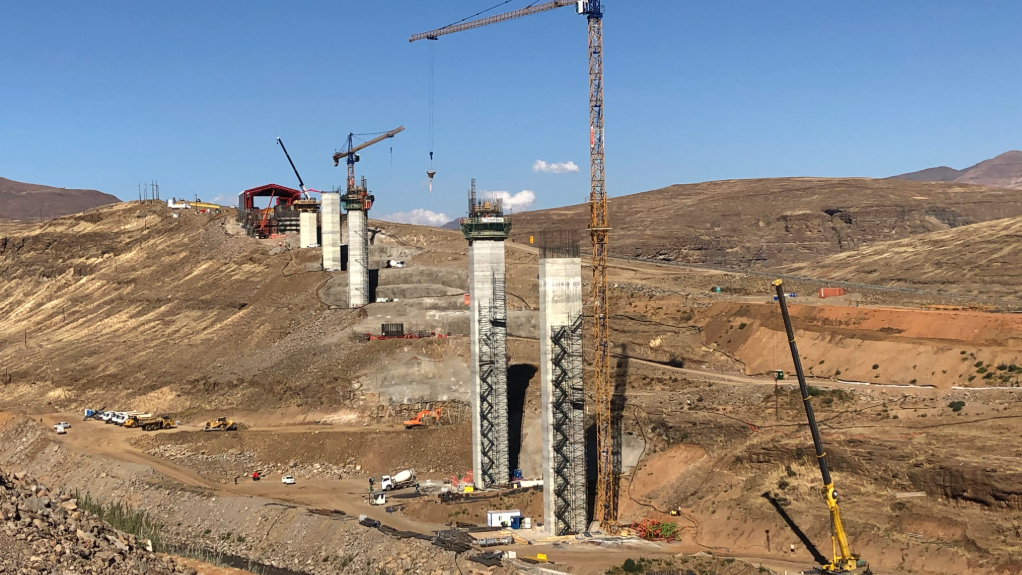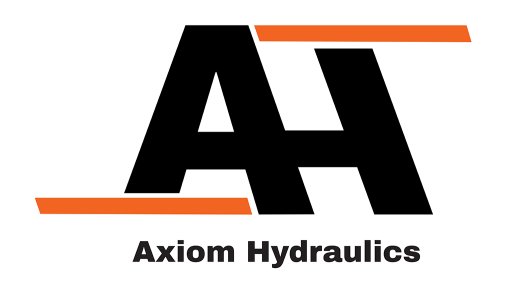Lesotho Highlands Water Project – Phase II


Photo by LHDA
Name of the Project
Lesotho Highlands Water Project (LHWP) – Phase II.
Location
Lesotho.
Project Owner/s
The Lesotho Highlands Development Authority (LHDA) is the implementing authority and the Lesotho Highlands Water Commission the oversight authority.
Project Description
Phase II of the LHWP builds on the 2003 completion of Phase I, which supplies water to Gauteng and uses the water delivery system to generate hydroelectricity in Lesotho.
Phase II will increase the current water supply from 780-million cubic metres a year incrementally to more than 1.27-billion cubic metres a year.
Phase II of the LHWP will be implemented in two distinct components: a water delivery system to augment the delivery of water to South Africa and a hydropower generation system, which will increase the current electricity generation capacity in Lesotho.
Polihali dam
The Polihali dam is a concrete-faced rockfill dam. It will create a reservoir on the Senqu and Khubelu rivers with a surface area of 5 053 ha.
The Polihali dam adds 2.33-billion cubic metres in storage capacity to the LHWP and will increase the current yearly supply rate capacity from 780-million cubic metres to 1.27-billion cubic metres, contributing towards meeting South Africa’s increasing water needs.
The additional flow of water from Polihali will simultaneously increase power generation within Lesotho to assist in meeting Lesotho’s domestic needs and reducing the country’s dependence on electricity imports.
The reservoir capacity will be 2.325-billion cubic metres and, apart from the main dam embankment, the project includes a 43-m-high saddle dam, also a CFRD; a 33-m-high upstream cofferdam; a 105-m-high intake tower with a 5 m outlet tunnel/chute to release 300 m3/s; a 98-m-long ogee spillway designed to discharge 4 300 m3/s; two bridges and an outlet house incorporating compensation and flood release valves; and a 2 × 2.1 MW mini hydropower station.
Polihali to Katse tunnel
The estimated 38-km-long, nominal bore 5-m-diameter Polihali–Katse dam tunnel will be constructed to transfer water from the Polihali reservoir to the Katse reservoir.
The Polihali dam will create a reservoir on the Senqu and Khubelu rivers with an estimated surface area of 5 053 ha and a full supply storage capacity of 2.325-billion cubic metres.
Advance infrastructure
Phase II required extensive infrastructure development before the mobilisation of contractors for the two main water-transfer works contracts of the Polihali dam and transfer tunnel. The Polihali intake site used the infrastructure developed to build the Polihali dam and transfer tunnel.
This includes feeder roads and bridges around the reservoir to connect affected communities, power supply systems, construction camps and communications.
The infrastructure at Katse dam and in the Matsoku valley will also be available for the Polihali–Katse tunnel construction.
Hydropower
Further feasibility studies for the hydropower component of Phase II have concluded that conventional hydropower is the more feasible option to meet Lesotho’s energy needs.
Three potential sites were identified: two on the Senqu river and a third site at Oxbow, on the Malibamat’so river.
The hydropower tender design has been approved by the government of Lesotho and procurement to solicit a service provider for detailed design and supervision of the Oxbow Hydropower Scheme is under way.
The plan is to commission it simultaneously with the water transfer component in 2031/2032
Potential Job Creation
An estimated 3 000 jobs will be created at the height of the construction phase of the main works of Phase II.
Capital Expenditure
R53-billion
The cost of the hydropower component is yet to be established.
Planned Start/End Date
According to the current master programme, water delivery is scheduled for 2027/28.
Timeous construction of the Polihali dam and transfer tunnel is critical to meeting the water delivery deadline of the project.
The project broke ground in May 2023.
Latest Developments
The construction of the Senqu bridge marked a significant milestone on May 24, when the first deck segment was cast on the northern abutment.
Work on the bridge design started in 2018, led by Zutari, formerly Aurecon Lesotho. Zutari also designed the Mabunyaneng and Khubelu bridges, the other two major bridges being built under Phase II.
The LHDA awarded the Senqu bridge construction contract, valued at about M2-billion, to the WRES Senqu Bridge Joint Venture (JV) in August 2022.
The Senqu bridge, which is larger that the Mphorosane bridge on the ‘Malibamats’o river that spans the Katse dam built in Phase I of the LHWP, is expected to be completed in early 2026.
Key Contracts, Suppliers and Consultants
Refer to a comprehensive list of key contracts, suppliers and consultants on Creamer Media’s Research Channel Africa (https://www.researchchannel.co.za/).
Contact Details for Project Information
LHDA, public relations, tel +266 2224600 or email brownm@lhda.org.ls or lhwp@lhda.org.ls
Article Enquiry
Email Article
Save Article
To advertise email advertising@creamermedia.co.za or click here
Comments
Press Office
Announcements
What's On
Subscribe to improve your user experience...
Option 1 (equivalent of R125 a month):
Receive a weekly copy of Creamer Media's Engineering News & Mining Weekly magazine
(print copy for those in South Africa and e-magazine for those outside of South Africa)
Receive daily email newsletters
Access to full search results
Access archive of magazine back copies
Access to Projects in Progress
Access to ONE Research Report of your choice in PDF format
Option 2 (equivalent of R375 a month):
All benefits from Option 1
PLUS
Access to Creamer Media's Research Channel Africa for ALL Research Reports, in PDF format, on various industrial and mining sectors
including Electricity; Water; Energy Transition; Hydrogen; Roads, Rail and Ports; Coal; Gold; Platinum; Battery Metals; etc.
Already a subscriber?
Forgotten your password?
Receive weekly copy of Creamer Media's Engineering News & Mining Weekly magazine (print copy for those in South Africa and e-magazine for those outside of South Africa)
➕
Recieve daily email newsletters
➕
Access to full search results
➕
Access archive of magazine back copies
➕
Access to Projects in Progress
➕
Access to ONE Research Report of your choice in PDF format
RESEARCH CHANNEL AFRICA
R4500 (equivalent of R375 a month)
SUBSCRIBEAll benefits from Option 1
➕
Access to Creamer Media's Research Channel Africa for ALL Research Reports on various industrial and mining sectors, in PDF format, including on:
Electricity
➕
Water
➕
Energy Transition
➕
Hydrogen
➕
Roads, Rail and Ports
➕
Coal
➕
Gold
➕
Platinum
➕
Battery Metals
➕
etc.
Receive all benefits from Option 1 or Option 2 delivered to numerous people at your company
➕
Multiple User names and Passwords for simultaneous log-ins
➕
Intranet integration access to all in your organisation















